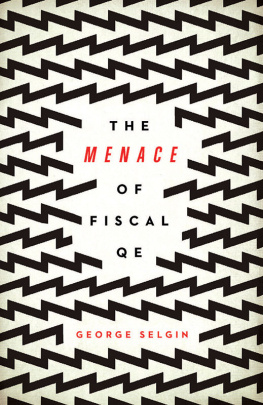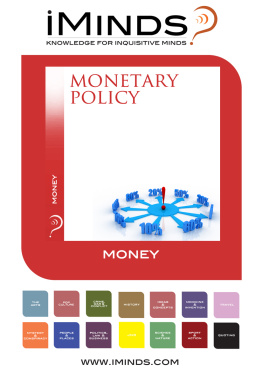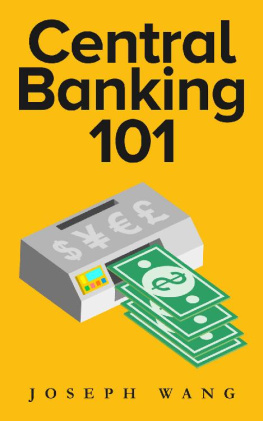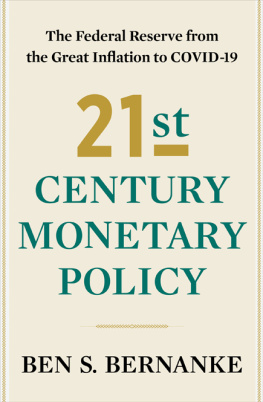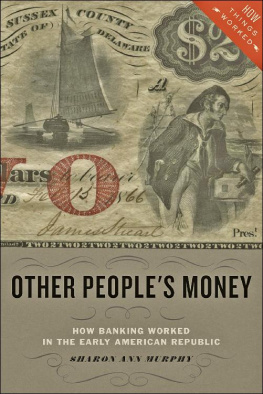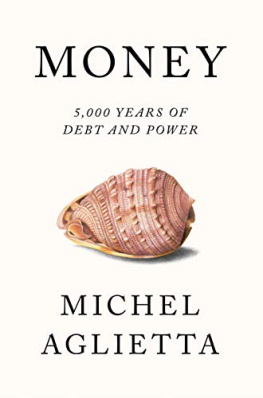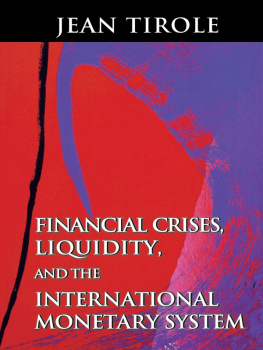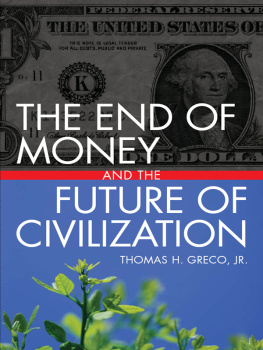with Lawrence H. White
with Lawrence H . White
with William D. Lastrapes and Lawrence H. White
IF ONE INSTITUTION CAN BE SAID TO exercise a greater influence than any other on the economic well-being of the worlds citizens, that institution must surely be the Federal Reserve System. Through its influence on the supply of money and credit in the United States and, indirectly, in other parts of the world, and also through its role in regulating the U.S. financial market, the Fed directly influences both the long-run behavior of spending and prices and the short-run behavior of real interest rates, real output, and unemployment. Occasionallysuch as during the so-called Great Moderation roughly coinciding with Alan Greenspans tenure (19872006) as Fed chairmanits conduct has been tolerable, if not beneficial. At other times its policies have been at best controversial and at worst widely condemned.
Despite the Feds spotted record, most people, economists included, continue to regard it and, more particularly, its governing and monetary-policymaking bodies, the Federal Reserve Board and the Federal Open Market Committee, as the best of all possible means for managing the U.S. dollar, and for indirectly regulating interest rates, prices, unemployment, and countless other macro- and microeconomic variables.
On what evidence or arguments does this consensus rest? Most non-experts who take part in it do so, presumably, out of deference to (most) experts. And the experts themselves? Its only natural to suppose that their own consensus rests upon a careful comparison of the Feds performance with that of other arrangements, including ones already tested in the United States or elsewhere, and as-yet untested ones that might be put into practice. People who defer to expert opinion presumably do so owing to this natural supposition.
Yet the surprising truth is that most economists, including most champions of the monetary status quo (or something not far from it), are only vaguely familiar with alternative arrangements, assuming that they are aware of them at all. Ask a monetary economist to compare the Feds record to that of the pre-Fed National Currency System, for example, and he or she is likely to declare confidently that, since World War II at least, the price level has become more predictable, output much more stable, and business contractions much less frequent and protracted, than was the case before 1913. In fact, none of these claims is true. Although the Fed was established in response to a series of severe economic crises, in most respects its performance has been even worse than that of the admittedly flawed system it replaced.
Likewise, although most economists are quick to pronounce the gold standard an unstable, if not barbaric, arrangement, few appreciate the crucial difference between the pre-1914 classical gold standard, which actually worked remarkably well, and the interwar gold exchange standard, which did not. Many also tend to blame the (classical) gold standard for pre-Fed financial and economic instability that was actually the fault of ancillary banking and currency legislationa mistake thats easy enough to avoid if one compares the United States classical gold-standard experience with that of some other gold-standard countries.
Not surprisingly, most U.S. economists know even less about the monetary histories of other countries than they do about U.S. monetary history. Take, for example, Canadas experience prior to 1935, when the Bank of Canada was established. Few know that even though it also lacked a central bank, Canada avoided not only the crises that shook the United States before 1914, but also those by which it was afflicted after 1929. In fact, not a single Canadian bank failed throughout the entire 1930s, while thousands of U.S. banks went under. Still less is it likely that our economist knows that the Scottish banking system was almost crisis free for a century prior to 1845, while England suffered from crisis after crisisdespite the fact that Scottish banks had no central bank to turn to, and despite the relative lack of banking regulations north of the Tweed. Instead of knowing about the actual record of past, decentralized monetary systems, most economists today simply take for granted that no country can avoid financial crises except by resort to substantial government regulation, including laws establishing a central bank capable of regulating its money supply and serving as a lender of last resort.
Given that so many economists today are unfamiliar with the non-central-bank-based monetary arrangements of the past, and so are convinced, in their ignorance, that such systems couldnt have worked well, it should come as no surprise that few have bothered to seriously consider how other, still experimental alternatives, might also prove more conducive to financial and monetary stability than the Fed and other central banks.
Of the many misunderstandings that lack of familiarity with past and hypothetical monetary alternatives can be said to have bred, one is of paramount importance: the failure to distinguish both weaknesses in financial arrangements and fluctuations in money and credit attributable to market-based forces and institutions from ones attributable to government interference with such market-based forces and institutions. It is owing to this paramount misunderstanding that experts, instead of appreciating the harm done by past and present government interference with market-based monetary and banking arrangements, continue, despite failure after failure, to cling to the vain hope that lasting stability might be achieved by adding still more layers of government control to those already in place.
Economists general lack of awareness of, and interest in, alternative monetary arrangementsand decentralized alternatives especiallyis partly due to the tremendous influence exerted by central banks themselves, and partly a reflection of the state of modern economics graduate programs. Most of the latter programs have dispensed with classes on either economic history or the history of economic thoughtsubjects once considered indispensableso as to make room for more courses on mathematical modeling and econometrics. Courses on monetary theory and macroeconomics have at the same time become increasingly abstractso much so, indeed, that many of them hardly refer to money at all! Faced with such a curriculum, graduate students are left to their own devices when it comes to learning anything at all about existing U.S. monetary institutions, let alone foreign or historical ones, or others that have been proposed but never tried.
My own exposure to such alternatives has been due mainly to a series of lucky accidents. First, the beginning of my graduate studies happened to coincide with the height of the post-1970s inflation, which sparked my interest in monetary economics. Second, I was, at the time, enrolled in an MA program in resource economics. Consequently, I had no expert (and, given the time, presumably Keynesian) professors to train me on the topic, and so had to avail myself of the university library. Third, after reading scores of very bad books on money, I finally got to Ludwig von Mises


